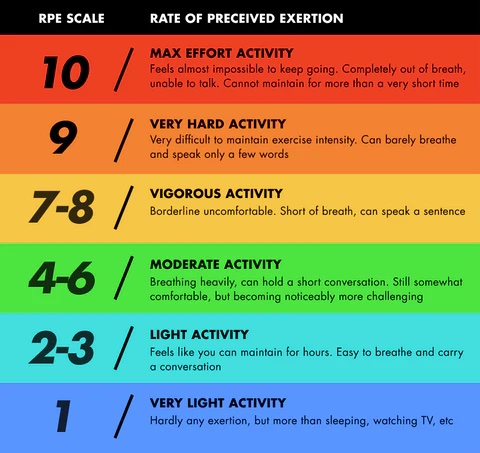What Is Rate of Perceived Exertion?
Rate of perceived exertion (RPE) is a simple, yet effective way to measure the intensity of your workouts. It's a subjective measure, so it's based on how hard you feel you're working, rather than on your heart rate or other objective measures.
The RPE scale is a 1-to-10 scale, with 1 being "very, very light" and 10 being "maximal exertion." To use the scale, simply rate how hard you feel you're working during your workout on a scale of 1 to 10.
For example, a 1 would be how you feel when you're sitting in a chair, and a 10 would be how you feel at the end of an exercise stress test or after a very difficult activity.
There are several benefits to using RPE to measure your workouts. First, it's very easy and convenient. You don't need any special equipment, and you can do it at any time, whether you're at the gym or working out at home.
Second, RPE is a very reliable measure of exercise intensity. Studies have shown that RPE ratings are closely correlated with heart rate and other objective measures of exercise intensity.
Third, RPE can be used to track your progress over time. As you get fitter, you'll find that you can exercise at a higher RPE without feeling as fatigued.
If you're looking for a simple, effective way to measure the intensity of your workouts, RPE is a great option. It's easy to use, reliable, and it can help you track your progress over time.
Here are some additional benefits of using RPE:
- It can help you set realistic workout goals. By knowing how hard you're working, you can make sure that you're challenging yourself but not overdoing it.
- It can help you prevent overtraining. If you're consistently working at a high RPE, you're more likely to get injured or burned out.
- It can help you stay motivated. Seeing your RPE ratings go up over time can be a great way to track your progress and stay motivated to keep working out.
Download Above or See It Below
Rate of Perceived Exertion Chart



